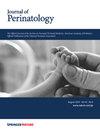高死亡率新生儿人群产前新生儿咨询的不公平现象。
IF 2.4
3区 医学
Q2 OBSTETRICS & GYNECOLOGY
引用次数: 0
摘要
目的:探讨高死亡率条件下产前咨询和父母复苏决策的不公平。研究设计:我们对活产新生儿被诊断为高死亡率的孕妇进行了回顾性图表回顾。我们检查了两个队列:围生儿(22 0/7-24 6/7周)和有严重先天性异常的婴儿。结果:共有194例新生儿符合围生期队列的资格标准,197例符合先天性异常队列的资格标准。在围生期队列中,94%的白人孕妇和81%的黑人孕妇接受了新生儿咨询(p = 0.009)。96%的商业保险患者接受了咨询,82%的医疗补助患者接受了咨询(p = 0.005)。一半的西班牙裔孕妇没有接受新生儿咨询(p = 0.02)。在先天性异常队列中,会说英语以外语言的孕妇接受咨询的可能性较小(44%对81%,p = 0.02)。结论:该区域评估发现了产前新生儿咨询中以前未被认识到的不平等。本文章由计算机程序翻译,如有差异,请以英文原文为准。

Inequities in prenatal neonatology consultation in high-mortality neonatal populations
To explore inequities in prenatal consultation and parental resuscitation decisions across high-mortality conditions. We conducted a retrospective chart review of pregnant people whose liveborn neonates were diagnosed with high-mortality conditions. We examined two cohorts: periviable infants (22 0/7–24 6/7 weeks) and infants with severe congenital anomalies. A total of 194 neonates met eligibility criteria for the periviable cohort, 197 for the congenital anomaly cohort. In the periviable cohort, 94% of White vs. 81% of Black pregnant people received neonatology consultation (p = 0.009). A total of 96% of those with commercial insurance vs. 82% of those with Medicaid received consultation (p = 0.005). Half of Hispanic pregnant people did not receive neonatology consultation (p = 0.02). In the congenital anomaly cohort, pregnant people who spoke a language other than English were less likely to receive consultation (44% vs. 81%, p = 0.02). This regional assessment found previously unrecognized inequities in prenatal neonatology consultation.
求助全文
通过发布文献求助,成功后即可免费获取论文全文。
去求助
来源期刊

Journal of Perinatology
医学-妇产科学
CiteScore
5.40
自引率
6.90%
发文量
284
审稿时长
3-8 weeks
期刊介绍:
The Journal of Perinatology provides members of the perinatal/neonatal healthcare team with original information pertinent to improving maternal/fetal and neonatal care. We publish peer-reviewed clinical research articles, state-of-the art reviews, comments, quality improvement reports, and letters to the editor. Articles published in the Journal of Perinatology embrace the full scope of the specialty, including clinical, professional, political, administrative and educational aspects. The Journal also explores legal and ethical issues, neonatal technology and product development.
The Journal’s audience includes all those that participate in perinatal/neonatal care, including, but not limited to neonatologists, perinatologists, perinatal epidemiologists, pediatricians and pediatric subspecialists, surgeons, neonatal and perinatal nurses, respiratory therapists, pharmacists, social workers, dieticians, speech and hearing experts, other allied health professionals, as well as subspecialists who participate in patient care including radiologists, laboratory medicine and pathologists.
 求助内容:
求助内容: 应助结果提醒方式:
应助结果提醒方式:


